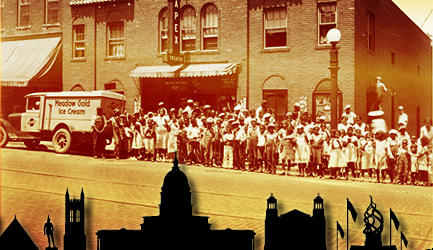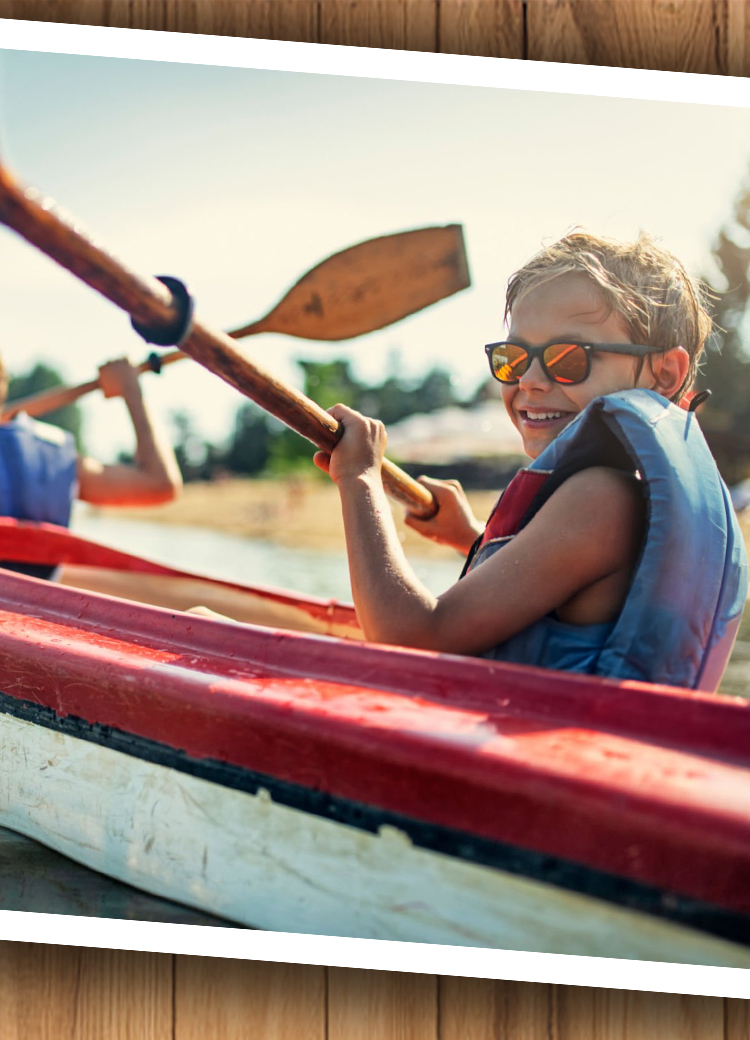Discover how you can help the Kansas River
Content
The library's Oceans of Possibilities summer reading theme offers a perfect opportunity to learn more about our local waterways such as the Kansas River. Dawn Buehler, Kansas Riverkeeper and Executive Director of Friends of the Kaw talked with us about her work to protect and advocate for the Kansas River.
Q & A with the Kansas Riverkeeper
Tell us about your work as the Kansas Riverkeeper.
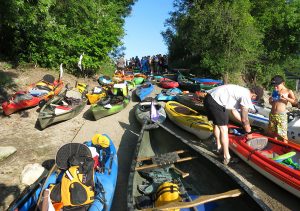 I have been the Kansas Riverkeeper since 2015. My primary responsibilities include monitoring, responding and mediating suspected pollution incidents to the Kansas River; facilitating educational paddle trips; and managing advocacy efforts to protect and preserve the river. As the Executive Director, I also manage the daily activities of Friends of the Kaw including staff, fundraising and grant writing. I am Governor Kelly’s appointee as Chair of the Kansas Water Authority, working on water quality and quantity issues across the entire state. The two things I enjoy the most about my work are first, connecting people to the Kansas River and helping them explore it for the first time. The second thing to clean up the river – the really dirty work of digging out decades old tires or just simply picking up someone else’s trash. I enjoy knowing the work we do is making the river a healthier place for us all, and hopefully a place my grandchildren will not have to cleanup like we are doing today.
I have been the Kansas Riverkeeper since 2015. My primary responsibilities include monitoring, responding and mediating suspected pollution incidents to the Kansas River; facilitating educational paddle trips; and managing advocacy efforts to protect and preserve the river. As the Executive Director, I also manage the daily activities of Friends of the Kaw including staff, fundraising and grant writing. I am Governor Kelly’s appointee as Chair of the Kansas Water Authority, working on water quality and quantity issues across the entire state. The two things I enjoy the most about my work are first, connecting people to the Kansas River and helping them explore it for the first time. The second thing to clean up the river – the really dirty work of digging out decades old tires or just simply picking up someone else’s trash. I enjoy knowing the work we do is making the river a healthier place for us all, and hopefully a place my grandchildren will not have to cleanup like we are doing today.
What are some of the special projects you are managing or are participating in?
One of our programs is Riverbank Restoration. We use volunteer led, public projects to demonstrate how we can remove invasive plant species and plant native plants to help protect our rivers. Removing non-native plants and returning native grasses, wildflowers, trees and shrubs will slow storm water and stabilize soil, decreasing erosion on the bank. The native plants will also filter pollutants and debris, provide habitat for wildlife, and provide food for pollinators. They are also beautiful! These projects allow us to build partnerships along the river as well as educate the public about how important these plants species are to our rivers and streams. Other important projects include river cleanups, educational paddle trips, adopt-a-boat ramp program and our Kids About Water Program for schools.
What can the public do to participate in local water quality efforts?
The first thing I like to say is to just be a responsible citizen and good steward of our environment. At the very core of this problem in our rivers is the need for all of us to do the right thing.
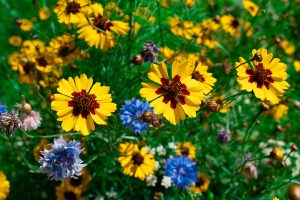
Coreopsis is one of many native Kansas plants you can add to your yard.
- All trash is one Kansas windy day away from a river or stream. Please secure your own trash, but also pick up trash wherever you go and dispose of it properly.
- Please fix leaking cars and don’t dump anything onto the ground. When it rains, anything on top of the ground will wash into our rivers.
- Wash your car at a car wash because the soapy water will be sent to the wastewater treatment plant to be cleaned before being returned to the river. Do not wash your car in the driveway as the soap suds go untreated to the river.
- Plant native plants in your yard! Native plants are made for Kansas weather and won’t require wasting water, fertilizer or nasty chemicals. (See K-State Research and Extention's list of native plants.)
- Get involved in your local community and encourage trash cleanups and good stormwater practices such as buffers around parking lots and anywhere you can put a buffer between the city and the river.
- VOTE for people who will implement healthy policies.
When we have clean communities, it also impacts whether or not people from out of town will want to come and spend money in our communities. Picking up our trash makes it a cleaner (and healthier) space for our visitors! Lastly, we should be good stewards of the rivers in our own communities. If it’s our trash, we should take care of it. Sending it on down the river just creates a burden for those downstream in the Missouri River, the Mississippi River and ultimately the Gulf of Mexico.
Many people are surprised to discover that the Kansas River is a great source of recreational opportunities. How can we safely enjoy the river?
There are many ways to connect to the Kansas River. Explore some of these options in your community:
- Sit on a bench along the river. Some communities offer this. If your community doesn’t, talk to the Parks & Recreation Department about getting a bench installed.
- Take a walk or ride your bike on a levee or river trail. If you don’t have one, get involved in local efforts to bring one next to the river!
- Fish from the banks of the Kansas River on public property. Look online at local maps to find public places to fish or call Friends of the Kaw for assistance.
- Kayak or canoe the Kansas River with many different groups, including Friends of the Kaw! Go to our website for more details and to find local businesses that offer this service.
What are some of your most memorable experiences on the river and some of your standout observations?
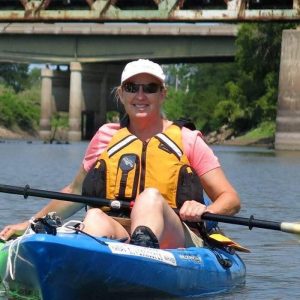
Kansas Riverkeeper Dawn
Buehler
My most memorable experience is the KAW 173 in 2020 where we had a team that kayaked the entire Kansas River – all 173 miles – in 9 days. We camped on the sandbars and experienced the river in a whole different way. It was truly special and will always be one of my favorite memories.
My favorite sections of the Kansas River include from Ogden to Manhattan, where you can see the rolling Flint Hills and feel yourself kayaking down the hills. I also love the 30 miles section from Belvue to Topeka because it is so quiet and full of wildlife. Some of my most favorites sights include a deer skipping across the river at dusk, two beavers that froze as we paddled by, otter tracks in the early morning along the water’s edge, and eagle tracks on a sandbar.
The Kansas River is a National River Trail, but it is also a working river. There are hazards to be aware of such as dams, so anyone who wants to explore the river should use our River Access Map for all of the details. There are recommend flow levels for safety as well as details information about each section of the river. Beginners should go out with an experienced group for the first time to learn about the river and safety hazards. Anyone can call Friends of the Kaw, we are more than happy to help you plan your trip!
The Kansas River is a prairie-based river – the longest in the world. As such, the sandbars are the hallmark of our river. We need to stop in-river dredging (mining for sand) and protect our prairies. The prairie protects the river and also washes the limestone that helps to make these beautiful golden sandbars. At the core of what we do at Friends of the Kaw is to protect our river for future generations. Join us as a member to increase our voice across the state and in the Statehouse. Join us as a volunteer to help us cleanup the river or as a Kaw River Guide to help teach the public about paddling the river. No matter how you want to give back, there is a place for you at Friends of the Kaw. Join us! We are stronger when we work together.







